Many of us cherish the notion that historical photographs capture a frozen moment in time. Upon more detailed examination, though, studio pictures sometimes possess more artifice and contrivance than would have been expected. Take, for instance, these paired images of my great-great-great-grandparents, Reuben Paine and Lovicy Hall. Continue reading Living moments
Tag Archives: Object Lessons
Contributing citizens
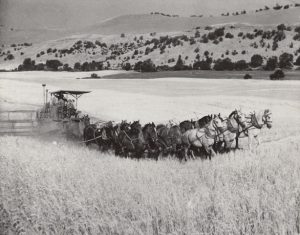 Several years ago my mother gave me a family picture that is unlike most family pictures; in fact, without the identifying information on the back, it doesn’t seem to be a family picture at all. Thank goodness for the label, which gives a ton of information, not only about the location, date, and people, but also about farming practices at the time. Continue reading Contributing citizens
Several years ago my mother gave me a family picture that is unlike most family pictures; in fact, without the identifying information on the back, it doesn’t seem to be a family picture at all. Thank goodness for the label, which gives a ton of information, not only about the location, date, and people, but also about farming practices at the time. Continue reading Contributing citizens
Kitchen inquisition
 One of my more inscrutable brick walls isn’t made out of brick at all. Rather, it looks to be made of cheese. No, not cheddar, bleu, or provolone, nor is it built from anything lost in the Badger State. I guess if had to describe the wall – you know, to say what sort of cheese it best resembled – I’d be forced to say “Swiss.” The reason for this is that the wall is somewhat genealogically airy, with both a cheesy truth and speculation leaking through it – at least in a manner of speaking.
One of my more inscrutable brick walls isn’t made out of brick at all. Rather, it looks to be made of cheese. No, not cheddar, bleu, or provolone, nor is it built from anything lost in the Badger State. I guess if had to describe the wall – you know, to say what sort of cheese it best resembled – I’d be forced to say “Swiss.” The reason for this is that the wall is somewhat genealogically airy, with both a cheesy truth and speculation leaking through it – at least in a manner of speaking.
The wall itself is a simple one. It was built around my mother’s date of birth, or at least the year in which she was born. Now, mom wasn’t born all that long ago, in 1935, so it’s amazing just how far back and out of memory “1935” can be – especially when one is trying to meld together “the rest of the story.” Continue reading Kitchen inquisition
Misconceptions of an American
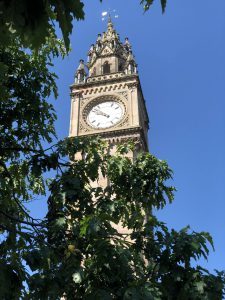 People always ask: What ethnicity are you? This is a difficult question for genealogists, as we can get quite detailed with our answers: “Well, on my mother’s maternal line we have Irish from County Leitrim and Monaghan, on my mother’s paternal line we have Italians and Irish, and my paternal line…” Well, you get the drift.
People always ask: What ethnicity are you? This is a difficult question for genealogists, as we can get quite detailed with our answers: “Well, on my mother’s maternal line we have Irish from County Leitrim and Monaghan, on my mother’s paternal line we have Italians and Irish, and my paternal line…” Well, you get the drift.
And while I’ve researched Italians, Germans, Irish, and Norwegians in my own ancestry, I’ve identified most with the Irish, given my closeness with my (likely mostly Irish) grandmother. Because of this, I’ve always thought that I knew something about the Irish, their culture, and their history. However, after two weeks in Ireland, and several guided bus tours, I found that of what I thought I knew, I actually knew very little. Here are some of the most embarrassing revelations: Continue reading Misconceptions of an American
ICYMI: Researching family heirlooms
[Editor’s note: This blog post originally appeared in Vita Brevis on 23 January 2017.]
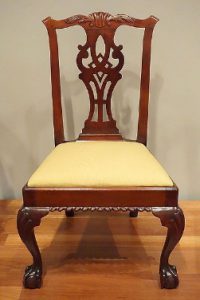
The Research Services team at NEHGS is occasionally approached with questions relating to the history of ownership (i.e. provenance) of a particular family heirloom. These questions are usually supplemented with stories about the heirloom’s first owner and how the object was acquired. Genealogists are uniquely qualified to carry out provenance research due to their familiarity with and frequent use of two sources commonly used in provenance research: wills and estate inventories. However, before consulting any of these sources, a serious study of an heirloom’s provenance should begin by studying the object itself.
To illustrate how the study of an object is crucial to provenance research, consider the following hypothetical scenario: An individual is interested in documenting the ownership of a piece of heirloom furniture (a side chair) that has been in the family for multiple generations. For the purpose of this exercise, let’s say that the chair is similar in form to the image at left, and that the chair is not a reproduction. Continue reading ICYMI: Researching family heirlooms
Gropius in New England
 In 1919, Walter Gropius founded the Bauhaus, a German school of design combining art, crafts, and industrial technology. This modern form of design favored clean lines rather than ornamentation – creating elegance in practicality, economy of form, and attention to materials. The Nazis, however, did not favor this minimalist school of design, and closed the school in 1933. Continue reading Gropius in New England
In 1919, Walter Gropius founded the Bauhaus, a German school of design combining art, crafts, and industrial technology. This modern form of design favored clean lines rather than ornamentation – creating elegance in practicality, economy of form, and attention to materials. The Nazis, however, did not favor this minimalist school of design, and closed the school in 1933. Continue reading Gropius in New England
‘The first of their fellow citizens’
 The life and legacy of Alexander Hamilton, America’s first Treasury Secretary, has penetrated the wider public consciousness ever since the release of Lin Manuel Miranda’s Hamilton: An American Musical.
The life and legacy of Alexander Hamilton, America’s first Treasury Secretary, has penetrated the wider public consciousness ever since the release of Lin Manuel Miranda’s Hamilton: An American Musical.
The musical touts Hamilton’s connection to his adopted home, New York City, and in truth his name is found on streets and buildings across Manhattan. Meanwhile, though Boston was a stronghold of his fellow Federalists, Hamilton did not spend much time in the city during his lifetime. As such it is peculiar that his statue can be found on the Commonwealth Mall in Boston’s Back Bay. Continue reading ‘The first of their fellow citizens’
Finding peace
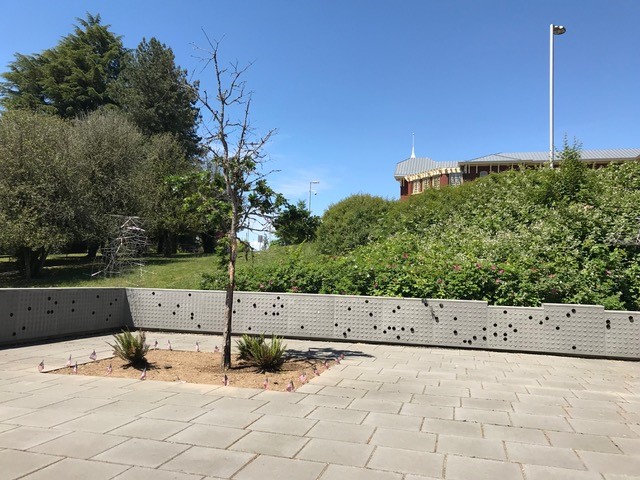
If you do family history long and broadly enough (searching out great-great-aunts and fifth cousins, as well as your direct ancestors), you’re sure to find them: family members whose census or burial records indicate that they were living in a state hospital or similar institution. Continue reading Finding peace
‘An iron will’
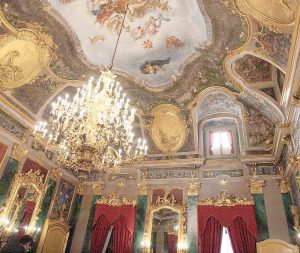
Immigration case records from the Hebrew Immigrant Aid Society (HIAS) often involve siblings, parents, spouses, children, or other relatives, but in some circumstances people reach out to whomever they can, asking for assistance from anyone they know. Anetta Ottolenghi Cavalieri was from the Piedmonte region of Italy, and had deep family roots there; she had no family or even close friends in the United States. But when Fascism began to make inroads in Italy, she reached out for help to pen pal Bessie Buxton of Peabody, Massachusetts, with whom she had discussed horticulture on and off for several years. Continue reading ‘An iron will’
I left my ship in San Francisco
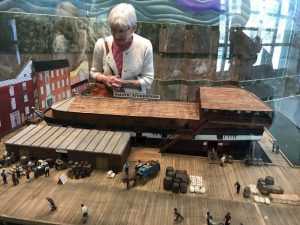
In my last post for Vita Brevis, I shared a picture of “Cleaveland House” on Martha’s Vineyard, which is currently owned and inhabited by a direct descendant of James Athearn, the man who built it. One reader asked, “How did ‘Cleaveland House’ get its name? Is there any association with the descendants of Massachusetts Colonist Moses1 Cleveland?”
The house is named for Athearn’s great-great-grandson, Capt. James Cleaveland, who bought the house about a century after its construction and substantially renovated it. Its next major renovation came about a century after that, when it finally acquired modern amenities such as indoor plumbing! Continue reading I left my ship in San Francisco

